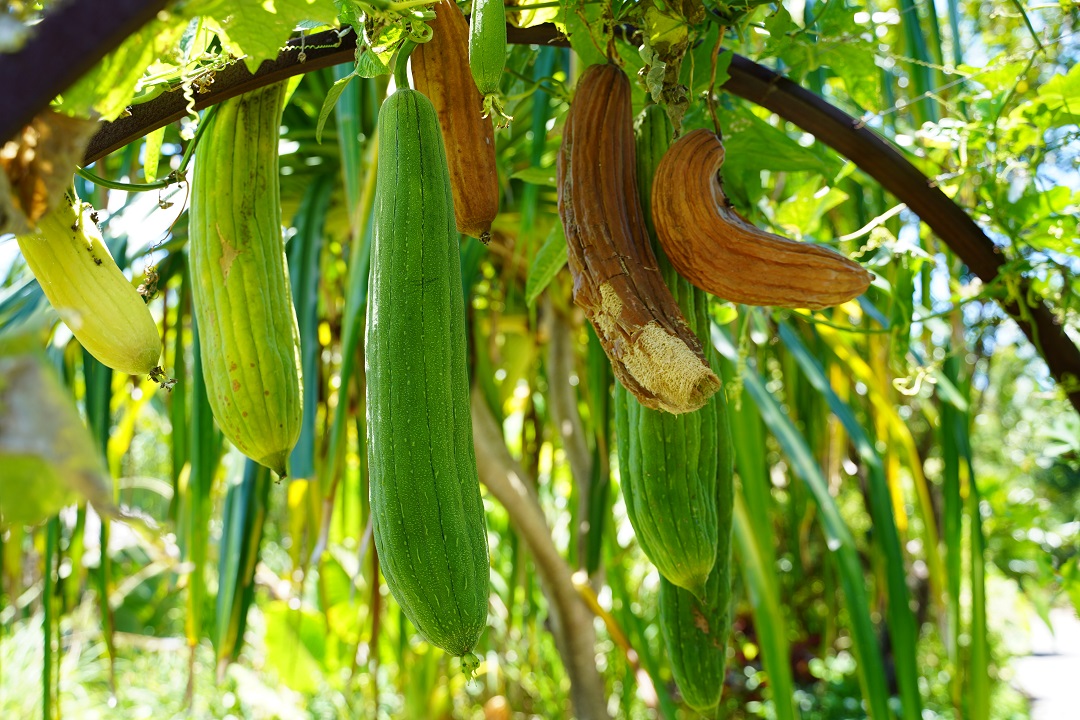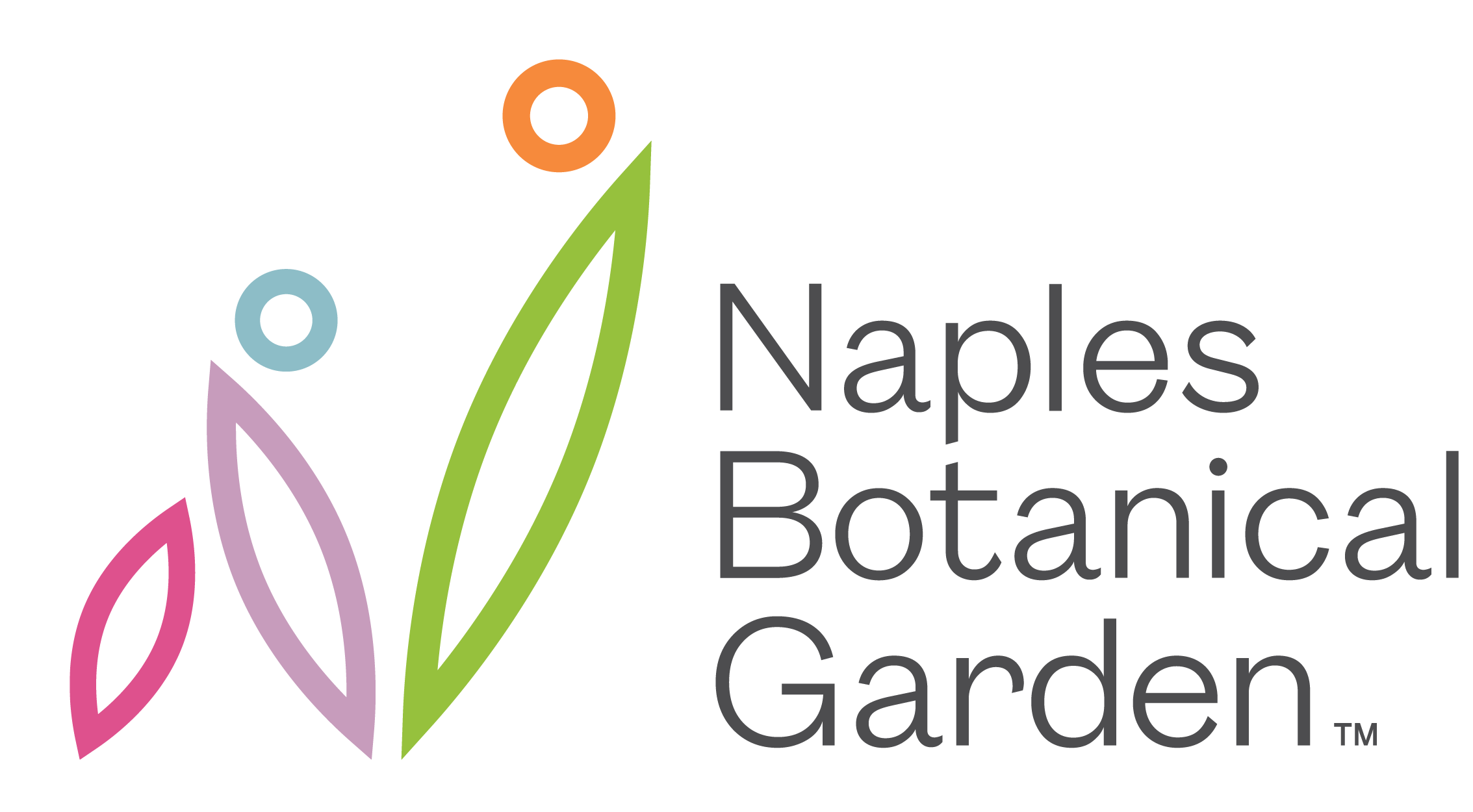
Do you love using a loofah in the bath?
Have you ever wondered where a loofah comes from? It may look like a sea sponge, but it does not come from the ocean.
It is actually a plant you can grow in your own backyard — or in the Garden’s case, in the Marcia and L. Bates Lea Asian Garden where we’re about to harvest our very first crop.

Native to Southeast Asia, luffa (Luffa cylindrica) is a round gourd in the Curcurbitaceae family, which makes them cousins of cucumber, watermelon, and squash. Like their relatives, the luffa plant sprouts vines and produces bright yellow flowers, which are a delicacy unto themselves and can be eaten raw or cooked. The vegetables, similar in taste to zucchini, can be eaten raw or cooked as premature gourds. Its fibrous skin can be boiled and used to prevent colds and nasal swelling.
Luffas thrive in hot and humid conditions. They need a trellis or fence to grow upon as luffa is a vining plant, similar to cucumber. Luffa is a relatively easy plant to grow, but is susceptible to pickleworm, like many other curcurbits. Luffas grow in zones 7 or higher, but zone 6 may be adequate if the plant is first grown indoors (at least six to eight weeks before your last frost date).

How does this plant turn into a sponge?
Loofahs — the natural sponges made from dried luffa — make great cleaning products because their fibrous materials inside are non-abrasive and can scrub dirt from floors and exfoliate the body. The practice of drying luffa is centuries old, dating back 9,000 years ago, originating in India.
Steps for Creating a Loofah Sponge
When to pick?
A luffa is ready to harvest when its skin browns and begins to peel, revealing its inner fibrous material.

Step one: Peel the outer layer of skin. Note: if it is not peeling easily, soak the luffas in lukewarm water for about 20 – 25 minutes.
Step two: To remove the seeds, remove the stems, and then shake the seeds free. If the luffa is more curved, try cutting it into halves first. You can dry the seeds in the sun, and then plant them next season. If a few seeds remain stuck in the luffa, you may leave them inside.

Step three: Dry in the sun, and then it will be ready for use as a loofah sponge for the bathtub, shower, dishes, floors, etc. The opportunities of this natural exfoliating tool are endless!
Tip: To keep the loofah clean, you can soak in bleach once a week.

Plant Care Tips
Luffas like full exposure to the sun, plenty of water, and well-drained soil. You must fertilize these plants once a month, but they are pretty low maintenance. They do absolutely need a sturdy trellis, fence, for fast-growing vines and heavy gourd fruits. The recommended planting time for these heat-loving plants is April or May.
Soak your luffa seeds in warm water for a day before planting to help with the germination process.
To check out the luffa plant, head to the veggie beds in the Marcia and L. Bates Lea Asian Garden, where a few gourds are growing now!

About the Author
Darby Kordonowy is the Content Coordinator for Naples Botanical Garden. Darby loves learning! Her favorite plants are the jade vine (Strongylodon macrobotrys) and the Camellia japonica ‘Pink Perfection.’ She is an amateur bird watcher!




